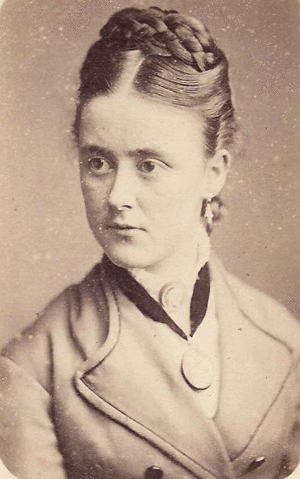Harriet Christina Newcomb facts for kids
Quick facts for kids
Harriet Christina Newcomb
|
|
|---|---|
 |
|
| Born | 20 May 1854 Bow, London, England
|
| Died | 15 April 1942 Watford, England
|
| Education | Maria Grey Training College |
| Occupation | Educationist, suffragist |
| Organization | Women's Freedom League |
Harriet Christina Newcomb (born May 20, 1854 – died April 15, 1942) was an English woman who worked for equal rights. She was an activist and an educationist. This means she worked to improve education for everyone.
Harriet believed in "progressive education." This was a new way of teaching that focused on students' needs. She also wanted better training for teachers. She worked on these ideas in both Britain and Australia. Harriet was also an active member of the Women's Freedom League. This group worked for women's right to vote.
Contents
Early Life and Education
Harriet Christina Newcomb was born in Bow, London. Her father, William Newcomb, was an accountant. Her mother was Harriet Sandell. Like many girls from her social class back then, Harriet was taught at home.
A Special Friendship
Harriet went to Maria Grey Training College. There, she met Margaret Emily Hodge. They became very close friends. Their friendship lasted for fifty years.
In 1897, a friend of Margaret's family encouraged them. Harriet and Margaret decided to travel to Sydney, Australia. They planned to help people in need. They were also asked to start a new teacher training program. This program was like the one at the University of Cambridge. Both women had completed this training in England.
Improving Education in Australia
When they arrived in Sydney, Harriet and Margaret joined the Teachers' Association of New South Wales. They worked hard to create training courses for teachers. These courses were for teachers at both primary and secondary school levels. Margaret Hodge also became a special lecturer. She taught at the University of Sydney's Women's College. The training courses for secondary teachers were held there.
Shirley School and Kindergarten
In 1900, Newcomb and Hodge opened their own school. It was called Shirley School and Kindergarten. This school was for girls. It also helped train new teachers. The school was located on Edgecliff Road in Sydney.
The main goal of Shirley School was to help students develop their own abilities. Harriet Newcomb was known for her great organizing skills. She was the school principal and also taught French. Shirley School started with only four students. But by the end of the first year, it had grown to 100 students!
Working for Change
While in Australia, Harriet and Margaret were very active. They worked on education, women's rights, and the right to vote. They both gave talks at the Australasian Association for the Advancement of Science. Harriet also spoke at the Sydney Ladies' Sanitary Association. She gave talks at the National Council of Women too. In 1903, Harriet became the first vice-president of the Society for Child Study.
Return to England and Activism
After some years, Margaret Hodge became unwell. So, in October 1908, both women returned to England. They settled down together in Maida Vale.
Supporting Women's Vote
In England, they became unofficial helpers for the women's right to vote movement in Australia. They helped organize a group of Australians for a big march in 1910. This march was to support women's right to vote. They also gave talks with pictures. These talks were for people thinking about moving to Australia. In 1911, Harriet became the honorary secretary. This was for a new group called the Australian and New Zealand Women Voters' Association.
Harriet and Margaret visited Australia again in 1912–13. During this trip, they helped create an "Imperial woman suffrage union." This group later became the British Dominions Woman Suffrage Union. It helped women in different parts of the British Empire work together for voting rights.
World War I Efforts
During World War I, Harriet Newcomb worked in London. She helped the Scottish Women's Hospitals for Foreign Service. These hospitals provided medical care during the war.
In 1919, Harriet joined the main committee of the Women's Freedom League. She had already been their literature secretary for many years. She stayed on the committee until 1922.
Later Life and Legacy
From 1927, Harriet Newcomb and Margaret Hodge lived in separate homes. But they stayed very close friends. They kept in touch often.
In her later years, Harriet was interested in the ideas of Rudolf Steiner. She also followed Anthroposophy. This is a way of understanding human wisdom and the spiritual world. Harriet believed that "interest in everything seems naturally to grow as one ascends the mountain of life." This means she felt that life became more interesting as she got older.
When the Second World War began, Harriet moved to Watford. She passed away there on April 15, 1942.
Remembering Harriet's Work
After Harriet's death, her friends and former students wanted to honor her. They started a special fund. It was later called the Newcomb-Hodge Fellowship. This fund was created to support the study of "true education."
In 1949, Rosine Guiterman wrote a book about Harriet Newcomb and Margaret Hodge. The book's subtitle called them "two pioneers in education." This shows how important their work was in shaping new ways of teaching.

